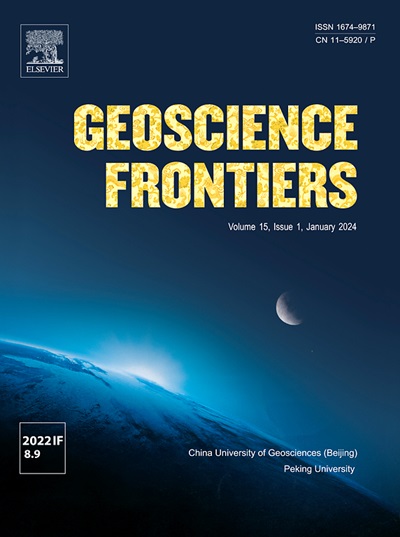Artificial intelligence and global carbon inequality: Addressing the challenges and opportunities for SDG 10, SDG 12, and SDG 13
IF 8.9
1区 地球科学
Q1 GEOSCIENCES, MULTIDISCIPLINARY
引用次数: 0
Abstract
This study examines the impact of artificial intelligence (AI) on carbon inequality (CI) in 67 countries from 1995 to 2019. The results suggest that (i) AI significantly amplifies CI both between and within countries due to its energy requirements and uneven deployment; (ii) trade openness and global value chain (GVC) positioning mitigate AI’s effect on inter-country CI, while robust governance—marked by larger government size and institutional transparency—curtails intra-country disparities; (iii) specific thresholds (trade openness > 4.74, GVC position > −1.07, government size > 2.90, transparency > −0.22) shift the impact of AI from exacerbating to reducing CI. The adverse effects of AI can be reversed through enhanced trade, GVC integration, and strong governance. Key policy implications: Policymakers must prioritize exceeding these thresholds to leverage AI for sustainable and equitable outcomes. This requires (a) promoting trade liberalization to spread the benefits of AI globally, reducing inter-country CI; (b) strengthening GVC participation to offset the carbon-intensive use of AI; (c) building government capacity and transparency to ensure fair adoption of AI domestically; and (d) embedding these strategies in climate policies to align AI with the long-term goals of environmental justice and the SDGs, particularly climate action (SDG 13) and reducing inequalities (SDG 10).

人工智能与全球碳不平等:应对可持续发展目标10、12和13的挑战和机遇
本研究考察了1995年至2019年67个国家人工智能(AI)对碳不平等(CI)的影响。结果表明:(i)由于能源需求和部署不均,人工智能显著放大了国家之间和国家内部的CI;(ii)贸易开放和全球价值链(GVC)定位减轻了人工智能对国家间CI的影响,而强有力的治理——以更大的政府规模和制度透明度为标志——减少了国家内部的差异;(iii)具体门槛(贸易开放>;4.74、GVC位置>;−1.07,政府规模>;2.90、透明度>;−0.22)将人工智能的影响从加剧转向减少CI。人工智能的不利影响可以通过加强贸易、全球价值链整合和强有力的治理来扭转。关键政策影响:政策制定者必须优先考虑超越这些门槛,以利用人工智能实现可持续和公平的结果。这需要(a)促进贸易自由化,在全球范围内传播人工智能的好处,减少国家间的CI;(b)加强全球价值链的参与,以抵消人工智能的碳密集型使用;(c)建设政府能力和透明度,以确保国内公平采用人工智能;(d)将这些战略纳入气候政策,使人工智能与环境正义和可持续发展目标,特别是气候行动(可持续发展目标13)和减少不平等(可持续发展目标10)的长期目标保持一致。
本文章由计算机程序翻译,如有差异,请以英文原文为准。
求助全文
约1分钟内获得全文
求助全文
来源期刊

Geoscience frontiers
Earth and Planetary Sciences-General Earth and Planetary Sciences
CiteScore
17.80
自引率
3.40%
发文量
147
审稿时长
35 days
期刊介绍:
Geoscience Frontiers (GSF) is the Journal of China University of Geosciences (Beijing) and Peking University. It publishes peer-reviewed research articles and reviews in interdisciplinary fields of Earth and Planetary Sciences. GSF covers various research areas including petrology and geochemistry, lithospheric architecture and mantle dynamics, global tectonics, economic geology and fuel exploration, geophysics, stratigraphy and paleontology, environmental and engineering geology, astrogeology, and the nexus of resources-energy-emissions-climate under Sustainable Development Goals. The journal aims to bridge innovative, provocative, and challenging concepts and models in these fields, providing insights on correlations and evolution.
 求助内容:
求助内容: 应助结果提醒方式:
应助结果提醒方式:


